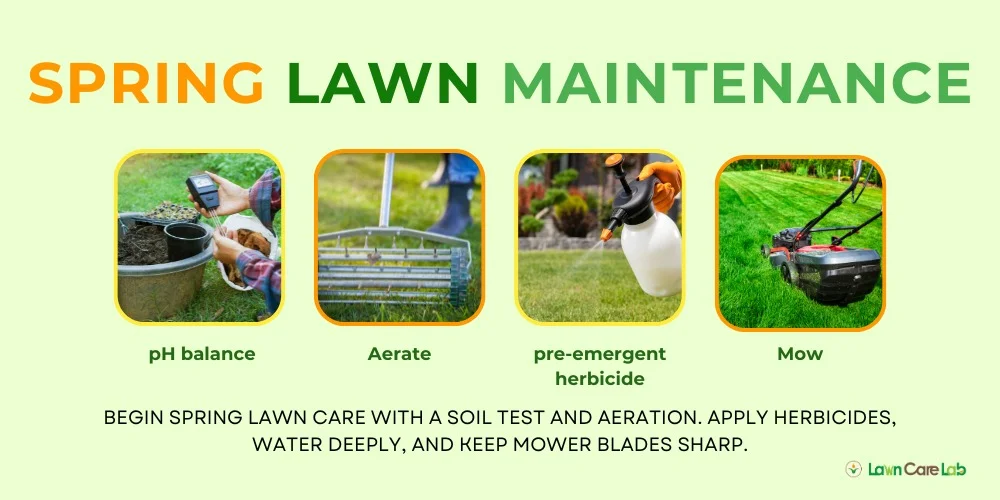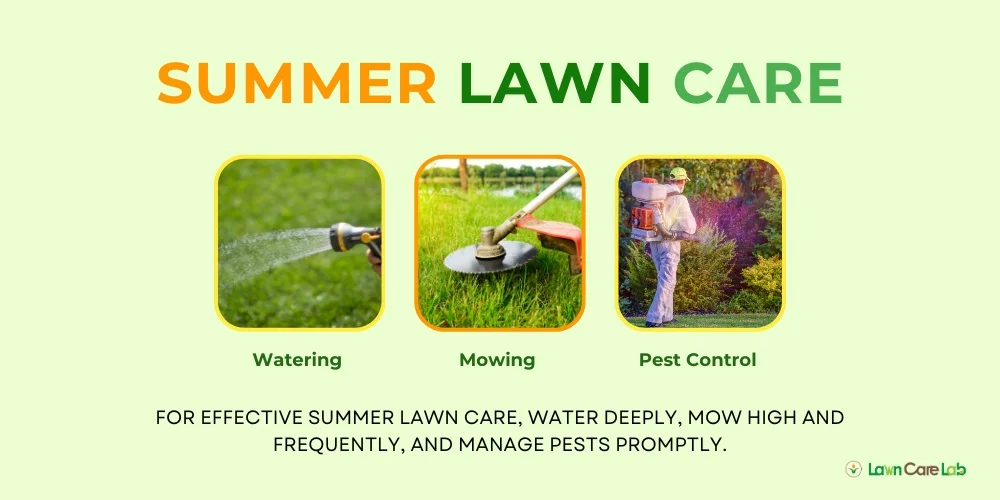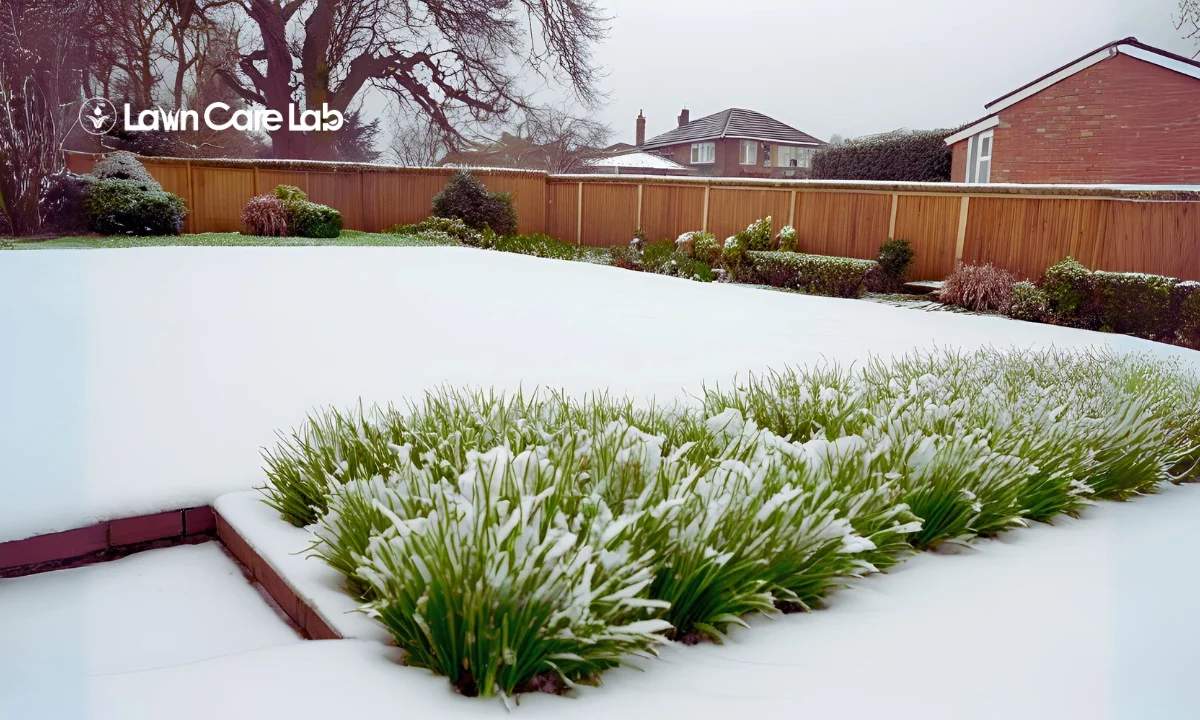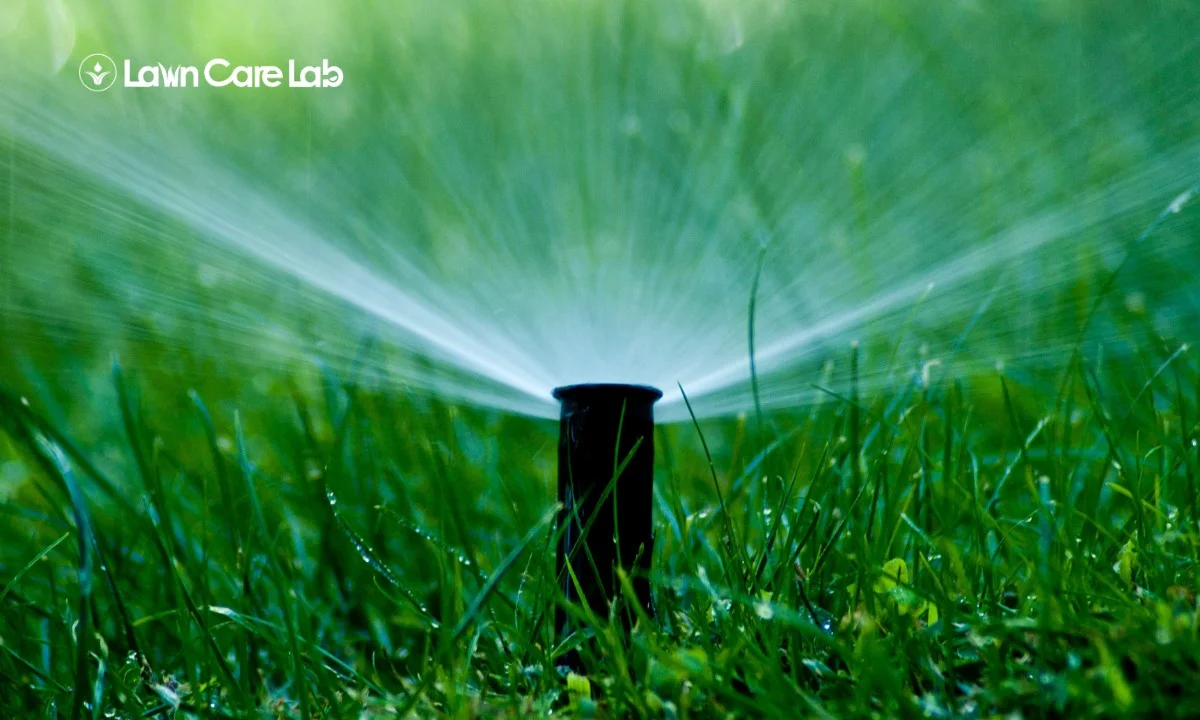Keeping a lawn healthy in extreme climates takes effort all year. It’s not just about summer care. Each season has its own needs to keep your grass in good shape.
In spring, start with soil preparation and weed control. Healthy soil helps grass grow better, and removing weeds early prevents them from taking over.
Summer brings its own challenges. You’ll need to water deeply to help roots grow strong. Also, keep an eye out for pests that can damage your lawn.
In fall, focus on reseeding and getting your lawn ready for winter. This helps fill in bare spots and makes your grass more resilient.
Winterizing your lawn is crucial as cold weather approaches. It ensures your lawn survives the winter and comes back strong in the spring.
Understanding these seasonal tasks is key to a thriving lawn.
Let’s go into the details of year-round lawn care for all seasons.
Table of Contents
Choosing the Right Grass
Selecting the right grass for your lawn is essential to ensure it stays healthy and strong, especially in extreme climates. Start by evaluating your climate zone. Grasses like Bermuda and Zoysia are ideal for hot and dry areas because they can survive drought and high temperatures. On the other hand, cool-season grasses such as Kentucky Bluegrass and Tall Fescue do well in colder climates and can handle frost.

Next, think about your soil type and how much sunlight your lawn gets. Grasses like Bahia do well in sandy soils, while loamy soils can support a variety of grass species. If your lawn is in full sun, choose sun-loving grasses. For shaded areas, opt for shade-tolerant varieties like Fine Fescue.
It’s also important to consider local pests and diseases. Consulting local extension services can give you recommendations specific to your area. This helps in choosing a grass that won’t only look good but also stay healthy and safe.
Spring Lawn Maintenance

Once you’ve chosen the right grass for your extreme climate, begin your spring lawn care by doing a soil test. This will tell you the nutrient levels and pH balance of your soil. Use a soil testing kit to find out what’s missing and fix it with the right fertilizers and either lime or sulfur to adjust the pH.
Aerate your lawn to reduce soil compaction and help roots grow better. This is crucial for nutrient uptake. For any bare spots, overseed with grass that’s suited to your climate.
Apply a pre-emergent herbicide to stop weeds from sprouting. If weeds do appear, use a post-emergent herbicide. Water your lawn deeply but not too often to encourage deep roots.
Lastly, sharpen your mower blades to ensure clean cuts, which help prevent disease.
Summer Lawn Care
For effective summer lawn care, it’s essential to water your lawn correctly to prevent it from drying out, mow regularly to avoid cutting too short, and manage pests to keep your grass healthy.

Water deeply and consistently to help grass roots grow stronger.
Mow more often but at a higher setting to keep your lawn healthy.
Watch out for pests like grubs and chinch bugs, and take action quickly to prevent damage.
Using specific products can help, too. For example, a sprinkler system with a timer can ensure your lawn gets enough water without you having to remember.
Lawn mowers with adjustable height settings can help you avoid cutting the grass too short.
Pest control products like grub killers and insecticides can target specific problems effectively.
Watering Techniques
To keep your lawn healthy during the summer heat, use deep and infrequent watering techniques. Watering early in the morning helps reduce evaporation, ensuring moisture reaches the roots. Aim to provide about one inch of water per week, ideally in one or two sessions. Use a rain gauge to track rainfall and adjust your watering schedule accordingly.
Avoid shallow, frequent watering because it leads to weak roots and makes your lawn more vulnerable to drought. Installing a drip irrigation system can also help deliver water efficiently. Watch for signs of overwatering, like fungal growth, and ensure proper drainage to prevent waterlogging.
Following these steps will help your lawn stay healthy and resilient.
Mowing Frequency
Maintaining the right mowing frequency in summer is crucial for a healthy lawn. If grass grows too long, it can attract pests and diseases. Cutting it too short can stress the turf.
Instead of following a fixed schedule, mow based on how fast your grass grows. Here are three important tips:
- Height of Cut: Set your mower blades to 3-4 inches. Taller grass helps shade the roots and keeps moisture in the soil.
- Grasscycling: Leave grass clippings on the lawn to break down naturally. This acts as a natural fertilizer and helps reduce thatch.
- Frequency: Mow when the grass is 4.5-6 inches tall. Only cut the top third of the grass. This way, you avoid shocking the grass and promote deeper roots.
Pest Control Strategies
Effective summer pest control strategies rely on understanding the pests that target your lawn and using eco-friendly treatments. First, identify common pests like grubs, chinch bugs, and sod webworms. Use beneficial nematodes or organic insecticides to control these pests without harming your family or pets. Regular monitoring and quick action are essential to prevent infestations.
| Pest Type | Identification Signs | Treatment Options |
|---|---|---|
| Grubs | Brown patches, spongy turf | Beneficial nematodes |
| Chinch Bugs | Yellowing grass, wilting | Organic insecticides |
| Sod Webworms | Chewed grass blades, small moths | Bacillus thuringiensis (Bt) |
Always follow product instructions and safety guidelines to ensure effective and safe pest control. Your diligent efforts will keep your lawn healthy and pest-free all summer long.
Fall Lawn Preparation
As autumn approaches, it’s key to aerate your lawn. Aeration helps the roots grow better and lets air, water, and nutrients reach deeper into the soil. This makes your lawn healthier before winter.
Here are three essential steps for fall lawn care:
- Dethatching: Remove the layer of dead grass and roots on top of the soil. This prevents disease and helps water soak into the ground better.
- Overseeding: Spread new grass seed to fill in any bare spots and make the lawn thicker.
- Fertilization: Use a balanced, slow-release fertilizer. This gives your lawn the nutrients it needs to stay healthy during the colder months.
Winter Lawn Protection
To protect your lawn during winter, start by applying a layer of mulch. This helps insulate the soil and retain moisture. Organic mulches like straw or shredded leaves work best because they decompose and enrich the soil. Aim for a mulch layer about 2-4 inches thick for optimal protection.
Limit walking on the lawn to prevent soil compaction and damage to the grass. Regularly clear away debris and fallen leaves to avoid fungal growth. If you have heavy snowfall, gently remove the snow to prevent the grass from suffocating.
Avoid using salt-based deicers on walkways near your lawn. These can harm the grass and change the soil’s pH. Instead, opt for safer alternatives like sand or calcium magnesium acetate.
Year-Round Watering Tips
Keeping your lawn healthy involves adjusting how you water it based on the season and climate. Here are some tips to help your lawn stay green and lush all year:
- Winter Dormancy: In winter, grass doesn’t need much water because it’s not actively growing. Watering too much can cause problems like fungus and root rot. Reduce how often you water during these colder months.
- Summer Heat: During hot summer days, your lawn needs more water. Water deeply and do it in the early morning to reduce evaporation and help the roots soak up the moisture.
- Soil Moisture Monitoring: Use a soil moisture sensor to check how wet your lawn is. This helps you avoid giving it too much or too little water, ensuring it grows well.
Conclusion
Think of your lawn as an athlete in training. To stay healthy and strong, it needs care all year long. Research shows that lawns with regular, season-specific maintenance are more resilient to extreme weather. This means that tasks like spring soil tests and summer deep watering are crucial.
By putting in the effort, you can ensure your lawn remains lush and green, no matter the climate challenges.
In the spring, start by testing your soil to understand its needs. This helps you know what nutrients to add. Products like Scotts Lawn Care Plan can guide you through this process.
Deep watering is essential during the summer. Watering deeply but less often encourages roots to grow deeper, making the lawn more drought-resistant. Aim for about an inch of water per week.
Fall is the time to fertilize and overseed. Fertilizing strengthens your lawn for the winter, and overseeding helps fill in thin areas. Consider using a product like Pennington Smart Seed.
Winter care involves keeping the lawn clear of debris and limiting foot traffic. This helps prevent damage and disease.
By following these steps, you can keep your lawn in top shape throughout the year.
- How to Create a Lawn Care Schedule for Southern Climates - October 30, 2024
- How to Use Compost Tea to Boost Lawn Growth and Soil Health - October 23, 2024
- The Best Grasses for Saltwater-Exposed Lawns: Coastal Lawn Care - October 17, 2024



